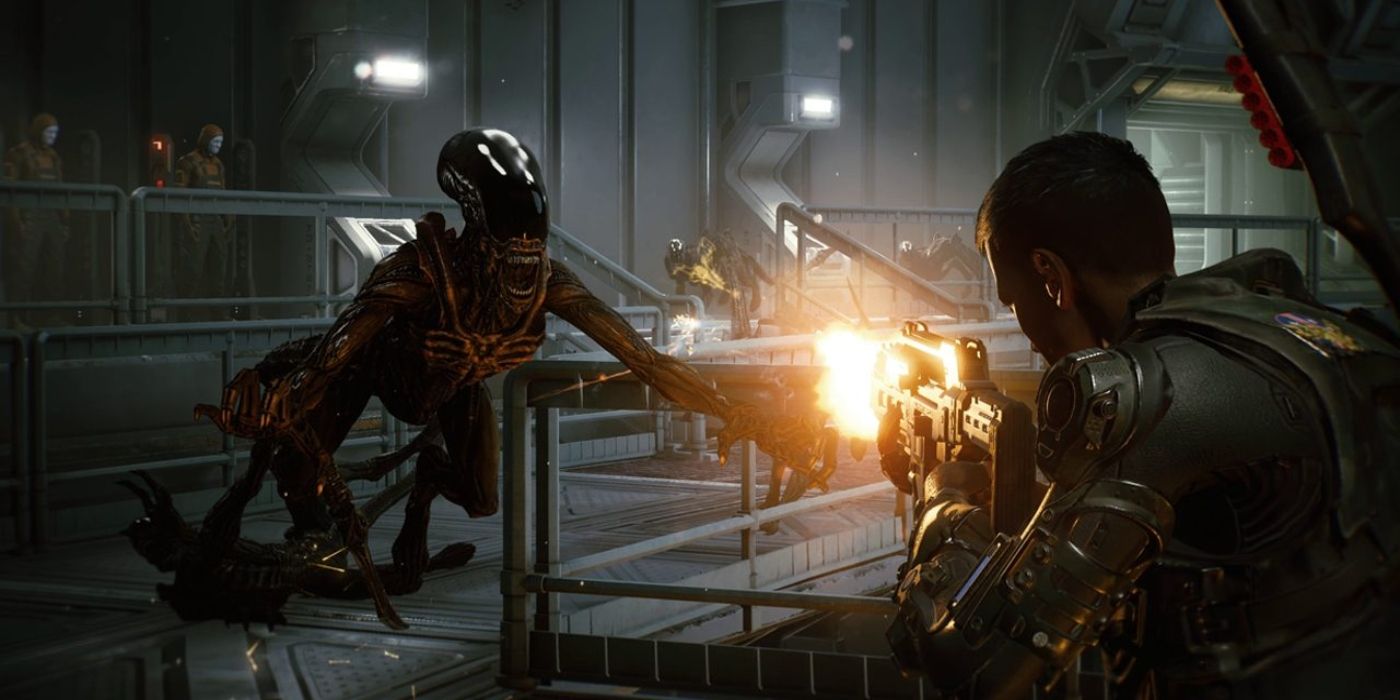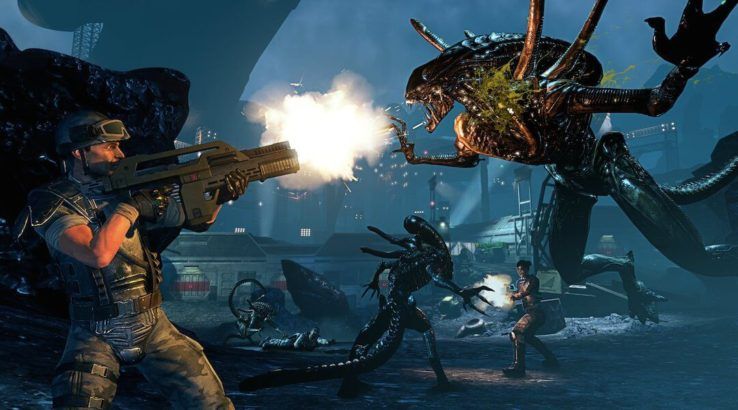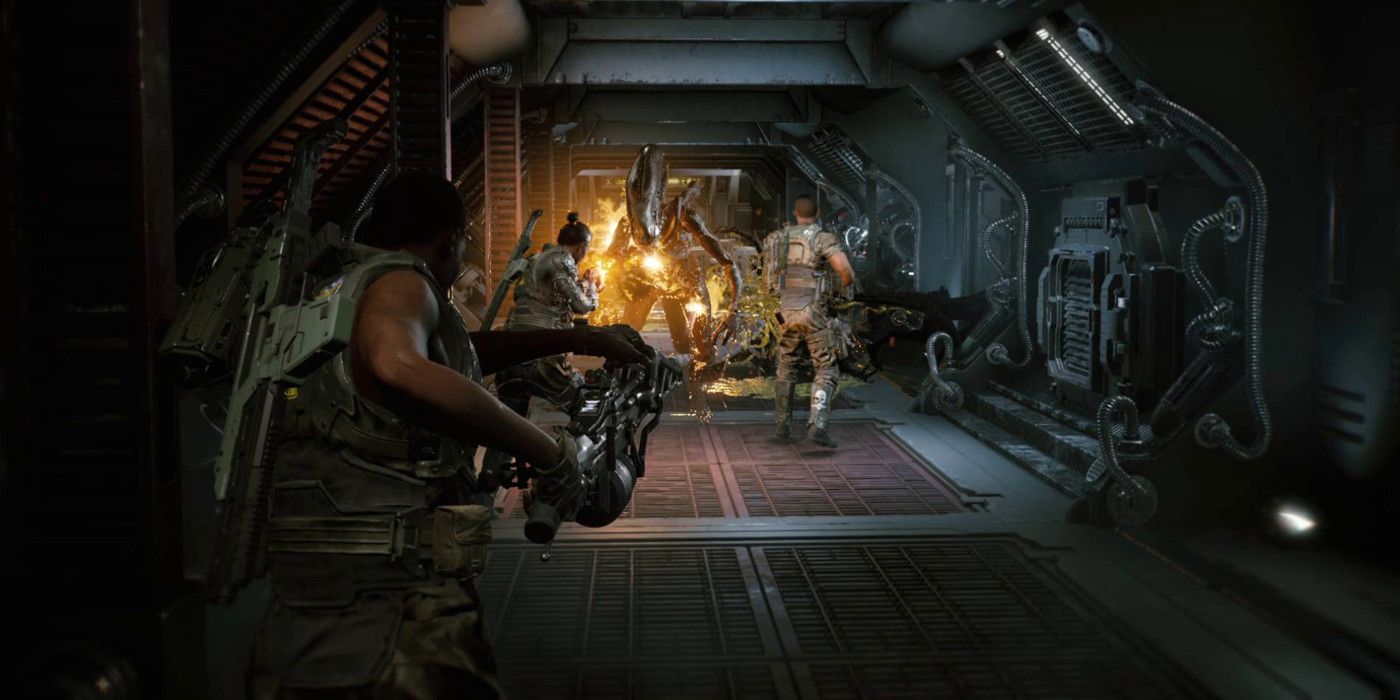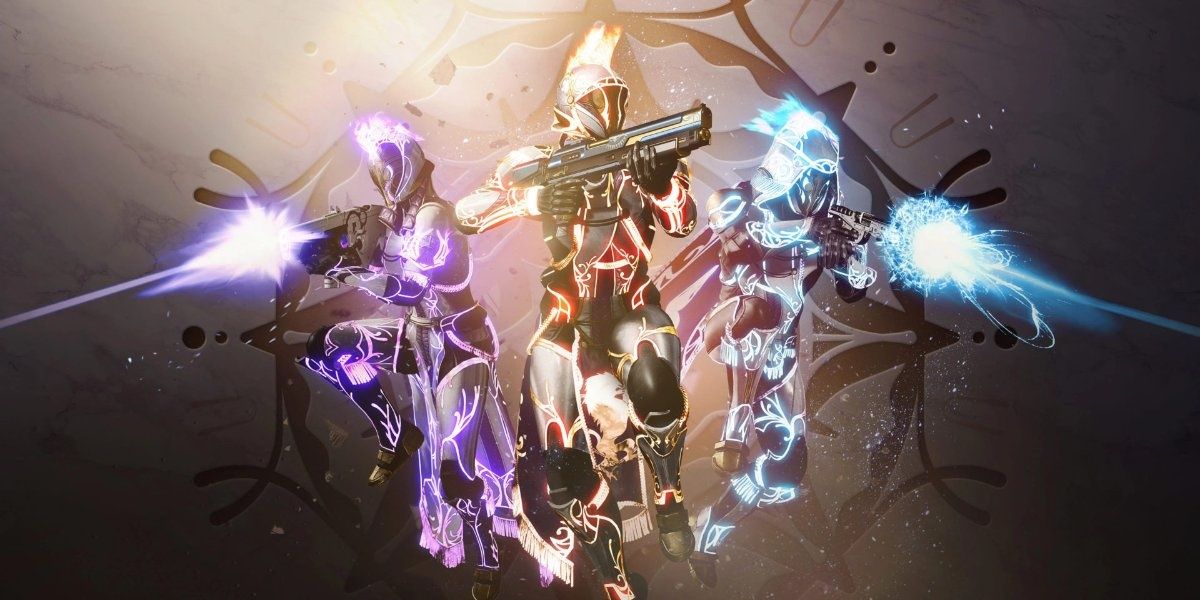
There are several Left 4 Dead-inspired games currently in some stage of development, ranging from Back 4 Blood to Redfall. Aliens: Fireteam Elite attempts that same formula, putting it into the titular survival-horror franchise as a co-op shooter.
Choosing from one of five classes, players can team up with two others in co-op to take out unending hordes of Xenomorphs. The game is best played with friends, but the game will fill the missing party members with Synth AIs should players go at it solo. On paper, Aliens: Fireteam Elite seems to get everything right, but it trips itself up with misstep after misstep.
RELATED: Aliens: Fireteam Elite Reveals PC System Requirements
Perhaps the best parts of Aliens: Fireteam Elite are its classes and moment-to-moment gunplay. Each weapon feels good in the hands of a Colonial Marine, whether it's a wide-blasting shotgun or heavy machine gun. Players can take on one of five classes that further refine this: Gunner, Demolisher, Technician, Doc, or Recon (with the latter being unlocked at the end of the story). Each class can be ever-so-slightly tweaked with modifications that allow players to set up and kit out each class to their liking.

Yet, from there, the fundamental flaw of Aliens: Fireteam Elite's gameplay just becomes more apparent. For a game designed with replayability as a core component, there is no incentive to do so. The extent to which players can customize their characters and their classes is limited, bearing in mind that this is still one of its best features, and the lack of variety becomes evident throughout every aspect of the game.
For example, while there is a total of twelve missions in Aliens: Fireteam Elite’s story, playing the first mission once is what players will do over and over again on repeat. Players will go down a claustrophobic, hallway-like structure while fighting Xenomorphs, which will open up to a bigger room where players can fortify and defend. Every little action a player will do summons a horde of Xenomorphs, even collecting dog tags from a fallen Marine.
The lack of variety in gameplay is further accentuated by the same problem in the environment and enemy types. Each mission will take players through a cave, a spaceship, or a hive, with the game never veering from this pattern, and the first two being the dominant environments. Players can find intel or hidden caches in each mission of Aliens: Fireteam Elite, but these are typically easy to find. And as players go down side paths to explore and find these, they will meet a dead end with nothing to show for it nine times out of ten.

For Aliens: Fireteam Elite’s enemies, there are three types in the game: Xenomorphs, Synths, and Pathogens. For the most part, though, they might as well all be the same thing. The AI only seems to have one goal: to push and overwhelm as often as possible. The smaller Pathogens operate just as Xenomorph facehuggers, the Synth guards with shields are replicated in Xenomorphs that also deflect frontal assaults, and most enemies leave behind some form of environmental damage on death. Ultimately, the differences between any two enemies are minuscule.
RELATED: Aliens: Fireteam Elite Getting Prequel Novel
Aliens: Fireteam Elite is one of those games that is better with friends. The problem here is that the slew of technical issues never ends for either player. Having played every mission on co-op at least once, there was never a time one of us wasn’t struggling with some sort of bug.
Audio issues were constantly a concern, as multiple missions featured the audio completely cutting out until we returned to base. Visual bugs were less of an issue, but it wasn’t uncommon to see one enemy completely disappear when killed, instead of their body falling to the ground like others. On top of that, even with both of us playing on a PS5, lagging issues were constant because of the sheer number of enemies on the screen. The worst of it was one particular game-breaking bug that wouldn’t allow us to restock ammo, use our abilities, or interact with anything in the game world. Once again, the only option was to return to base where our weapons would suddenly work.

The game clearly wants players to continually replay missions to maximize their builds, as each class and weapon can rank up alongside the player’s overall. Throughout the game, players can complete Challenge Cards that modify gameplay to elicit new rewards, but these rewards are sometimes duped. The incentive to play any mission more than once simply isn’t there across all of its attempts.
When the campaigns are finished, players also unlock harder difficulties, a Horde Mode, and a new class, but those add-ons don't encourage repeat playthroughs. The problem with the Horde Mode, in particular, is that the entire game is one large Horde Mode. Besides some minor mechanic changes, the Horde Mode is nothing players won’t already have experienced in the campaign. That’s not a knock against Horde Modes, because they can often be fun, but there is nothing new or incentivizing to continue with it once credits roll in Aliens: Fireteam Elite.
Aliens: Fireteam Elite has an interesting premise: co-op shooter set in the Alien universe where players must push their abilities, refine their build, and face a continuous onslaught of enemies. In reality, though, it’s a bug-filled slog that proves to be a one-trick pony.
Aliens: Fireteam Elite releases August 24 for PC, PS4, PS5, Xbox One, and Xbox Series X. Game Rant was provided a PS5 code for the purposes of this review.
MORE: 15 Most Anticipated Games of Fall 2021



